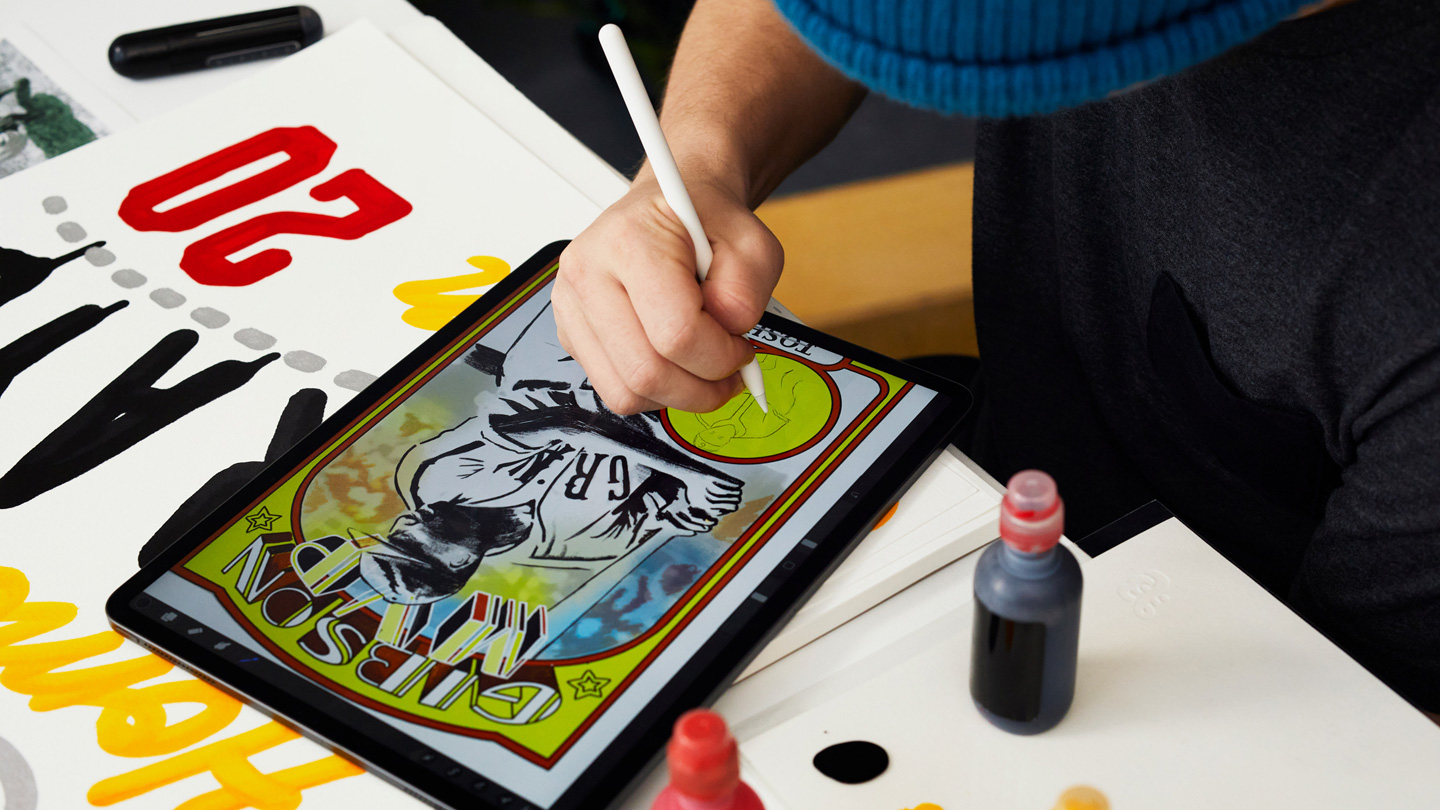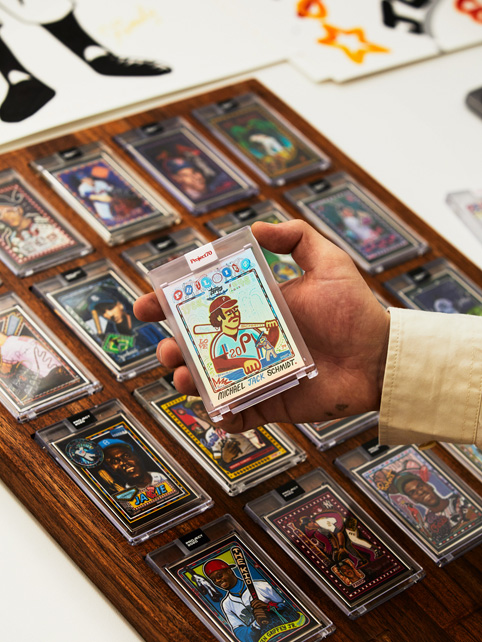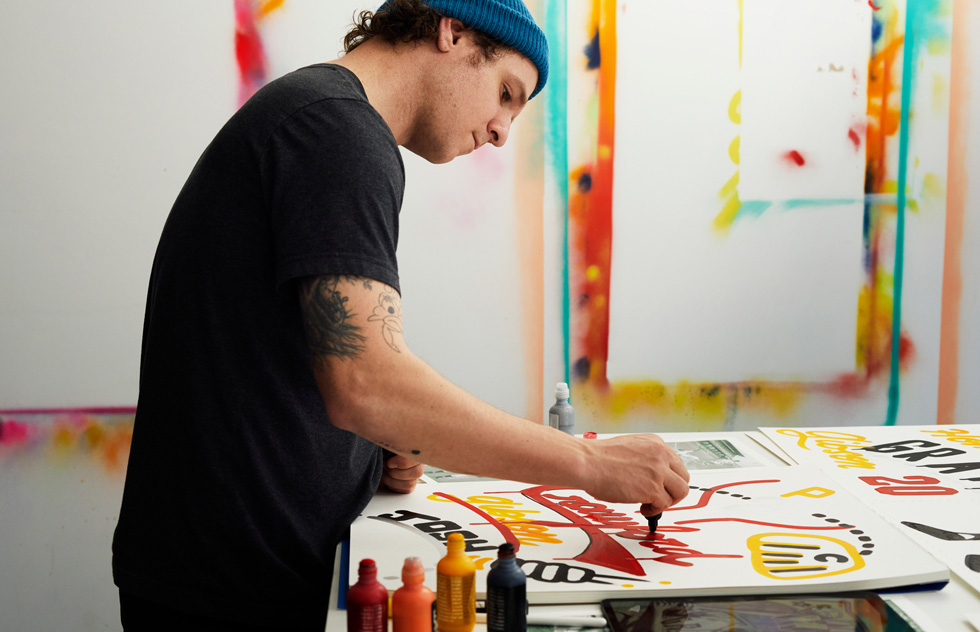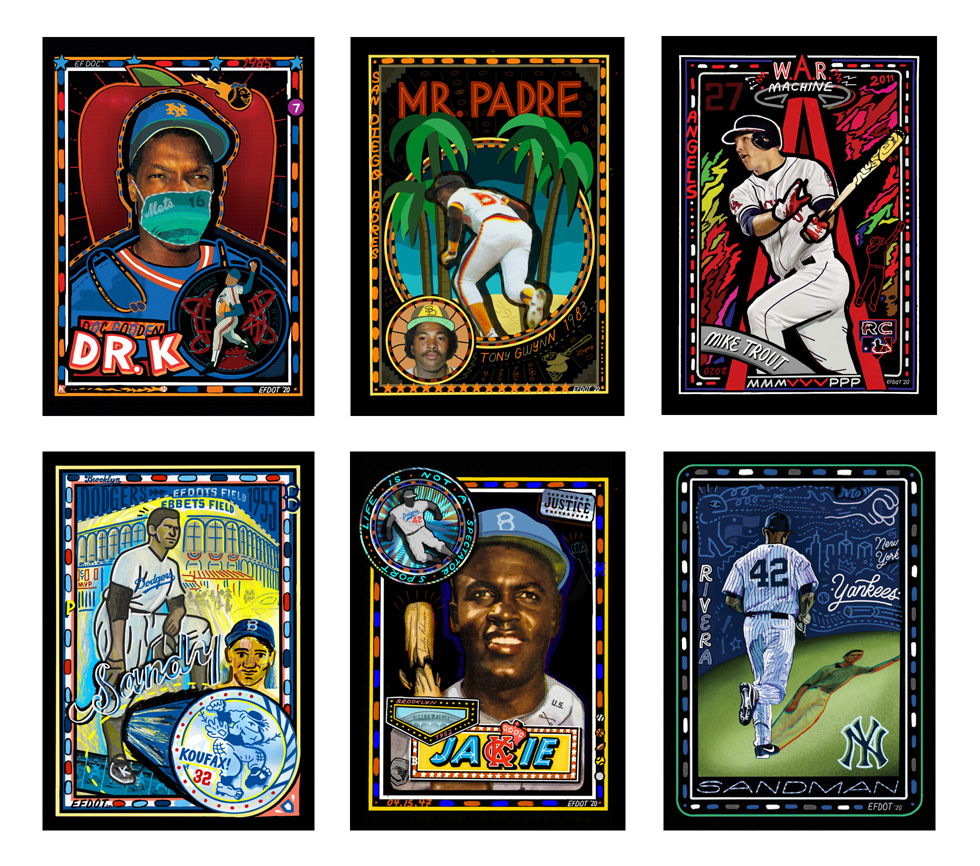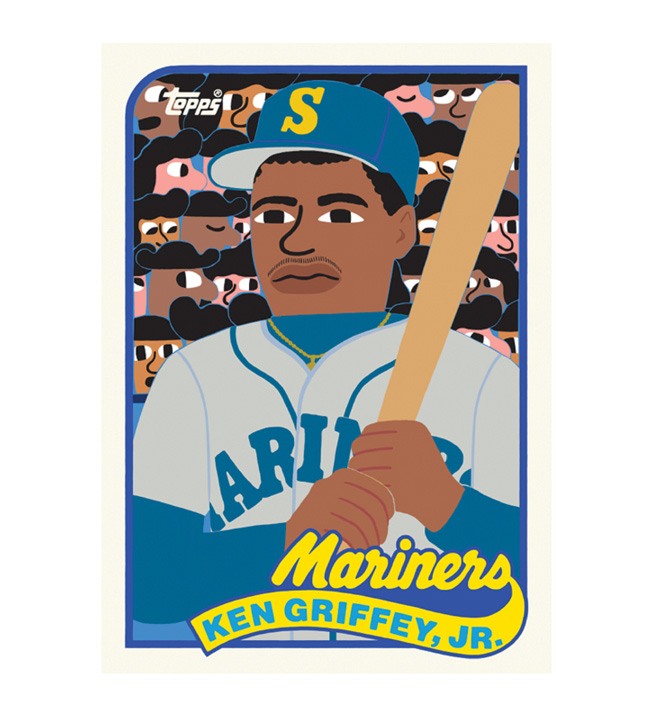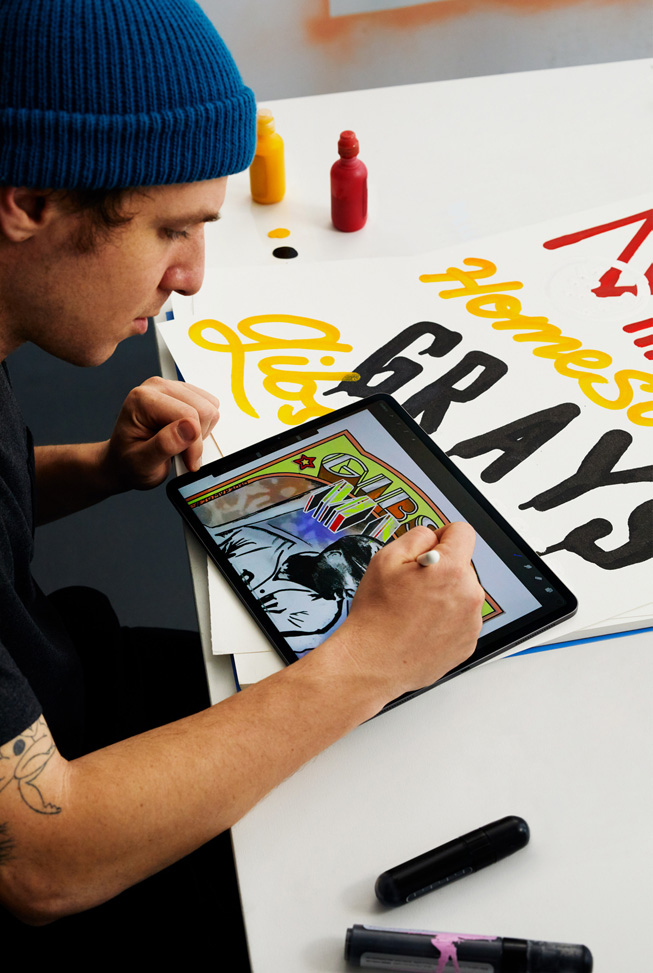FEATURE
31 March 2021
Artists reimagine the baseball card with iPad Pro and Apple Pencil
In his Brooklyn studio, artist Eric “Efdot” Friedensohn sets up his tools for his next project. It calls for a little bit of nostalgia, mixed with his signature bold and graphic art style. He sits down at his desk, picks up his iPad Pro and Apple Pencil, and gets to work.
“iPad Pro is very intuitive,” says Efdot. “And together with Apple Pencil, it’s like an extension of my hand and my brain.”
His canvas today is a baseball card. While it might seem like an unexpected place to find modern art, there’s a renaissance under way for these collectables, thanks in part to visual storytellers who are transforming sports memorabilia into pocket-sized masterpieces.
Last year, Efdot started working with Topps, the official trading card company of Major League Baseball (MLB), for Project 2020. It was a limited edition release of 20 baseball cards illustrated by 20 different artists that attracted not just collectors and sports enthusiasts, but art and culture lovers too. It’s part of the reason that topps.com saw an astounding 250 percent increase in sales from 2019 to 2020.
From left to right: Artist Eric “Efdot” Friedensohn in his Brooklyn-based studio. Efdot created cards for Topps’s Project 2020, and is creating a new set for the company’s Project 70.
From top to bottom: Artist Eric “Efdot” Friedensohn in his Brooklyn-based studio. Efdot created cards for Topps’s Project 2020, and is creating a new set for the company’s Project 70.
This year, Efdot is part of Project 70, which enlists even more artists and tastemakers to reinterpret cards from the 70 years that Topps has been immortalizing baseball players. New cards are released online every weekday through the end of the year and each card is available to buy for 70 hours only.
Efdot begins each of his cards with extensive background research on the player’s life and career. Then he sketches rough composites on paper with pencil or markers.
“If I do a piece of lettering that says the team name or the player’s name and I really like it — maybe there’s some cool drips or accidental textures that happen — I will snap a photo of that with my iPad,” says Efdot. “That part of the sketch goes right on the card.”
Once he moves over to his iPad Pro, Efdot uses Apple Pencil to illustrate each card in the Procreate app.
“I think the digital tools help me work faster and help me work in layers so I can easily combine ideas,” says Efdot.
One of the cards Efdot is designing features Josh Gibson, a powerhouse hitter from the Negro Leagues who never got the chance to play in the Major Leagues because of segregation. It’s a tribute that means a great deal to Josh Gibson’s family.
“We’re very excited about it,” says Sean Gibson, Josh’s great-grandson. “It’s also perfect timing — there are a lot of things going on right now to recognize Negro League players.”
In December, the MLB announced that it is retroactively bestowing Major League status on seven Negro Leagues that operated between 1920 and 1948. As a result, 3,400 Negro League players, including Josh Gibson, will have their records and stats entered as part of Major League history once the MLB completes the review process.
“In 1943, Josh hit .441,” says Gibson. “If that stands, he would be the MLB’s single season all-time batting leader. It’s one of several categories where Josh’s stats would make the top five, and so we’re hoping that this helps bring more recognition to Josh and our campaign to have the MVP trophy renamed in his honor.”
Telling a story through details is critical to Efdot. It’s the reason the card he designed has the letters MVP prominently displayed, as well as a number of nods to Gibson’s life, including a catcher’s mitt to symbolize his position and a mention of Josh Gibson Field in Pittsburgh, where he started playing sandlot ball. The field is now home to the Josh Gibson Baseball Academy for youth players.
Artist Keith Shore, who works out of his home studio in Bucks County, Pennsylvania, also contributed to both Project 2020 and Project 70. He uses iPad Pro and Apple Pencil to lay down his initial sketches as he conceptualizes the idea for each of his cards.
“I use iPad Pro to replace drawing on paper,” says Shore. “It’s super smooth and I can have fun with it. It makes starting the process so stress free.”
Both Shore and Efdot drew on their own memories of collecting sports cards and going to baseball games with their fathers for the Topps projects.
“You know what the magic of this is?” says Shore. “I got so many emails from people thanking me for reminding them of their childhood and bringing a smile to their face during this horrible year, and that feels incredible.”
Efdot also felt a sense of connection illustrating each card, especially as he dug in and learned more about so many giants of baseball history.
“I wasn’t expecting this experience to be so powerful for me,” says Efdot. “Getting to illustrate these players and add my style to these cards — I just feel so grateful to be able to honor these legends. But what’s most important is telling these stories, and my art is simply a vessel for that.”
Share article
Images of Eric “Efdot” Friedensohn and Topps Baseball Cards
